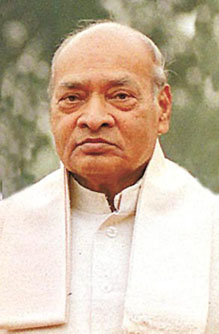The Indian government on Tuesday ( i.e 27th May 2014) announced its list of cabinet ministers along with their portfolios, a day after Narendra Modi was sworn in as the new prime minister.
Modi’s Bharatiya Janata Party (BJP) and its allies won a landslide victory in a mammoth general election grabbing 336 of the 543 seats and ending the Congress-led government’s decade-long rule.
Besides Modi, 45 other members were inducted into the new council of ministers, a third smaller than the previous government. Modi himself would look after atomic energy, space, personnel and any ministry not allocated to a cabinet colleague.
Modi announced on Sunday that a smaller cabinet was a move to a more centralised system of governing, aimed at breaking bottlenecks widely blamed for dragging down India’s economic growth.
Arun Jaitley, a former commerce and law minister, takes charge of finance, corporate affairs and defence, although he said the defence ministry charge is temporary. Rajnath Singh is India’s new home minister.
|
Prime Minister and Council of Ministers – India |
| S.no | Portfolio | Name |
Cabinet Ministers . |
||
| 1 | Prime Minister and also in-charge of the Ministries/Departments not specifically allocated to the charge of any Minister | Narendra Modi |
| Personnel, Public Grievances and Pensions | ||
| Department of Atomic Energy Department of Space | ||
| 2 | Home Affairs | Rajnath Singh |
| 3 | External Affairs, Overseas Indian Affairs | Sushma Swaraj |
| 4 | Finance, Corporate Affairs, Defence | Arun Jaitley |
| 5 | Urban Development Housing, Urban Poverty Alleviation, Parliamentary Affairs | M Venkaiah Naidu |
| 6 | Road Transport, Highways Shipping | Nitin Gadkari |
| 7 | Railways | D V Sadananda Gowda |
| 8 | Water Resources, River Development and Ganga Rejuvenation | Uma Bharati |
| 9 | Minority Affairs | Dr Najma A Heptulla |
| 10 | Rural Development, Panchayati Raj, Drinking Water and Sanitation | Gopinath Munde |
| 11 | Consumer Affairs, Food and Public Distribution | Ram Vilas Paswan |
| 12 | Micro, Small and Medium Enterprises | Kalraj Mishra |
| 13 | Women and Child Development | Maneka Gandhi |
| 14 | Chemicals and Fertilizers | Ananth Kumar |
| 15 | Communications and Information Technology, Law and Justice | Ravi Shankar Prasad |
| 16 | Civil Aviation | Ashok Gajapathi Raju Pusapati |
| 17 | Heavy Industries and Public Enterprises | Anant Geete |
| 18 | Food Processing Industries | Harsimrat Kaur Badal |
| 19 | Mines Steel Labour and Employment | Narendra Singh Tomar |
| 20 | Tribal Affairs | Jual Oram |
| 21 | Agriculture | Radha Mohan Singh |
| 22 | Social Justice and Empowerment | Thaawar Chand Gehlot |
| 23 | Human Resource Development | Smriti Irani |
| 24 | Health and Family Welfare | Dr Harsh Vardhan |
Ministers of State with Independent Charge . |
||
| 1 | Development of North Eastern Region, External Affairs, Overseas Indian Affairs | General VK Singh |
| 2 | Planning, Statistics and Programme Implementation, Defence | Inderjit Singh Rao |
| 3 | Textiles, Parliamentary Affairs, Water Resources, River Development and Ganga Rejuvenation | Santosh Kumar Gangwar |
| 4 | Culture and Tourism | Shripad Yesso Naik |
| 5 | Petroleum and Natural Gas | Dharmendra Pradhan |
| 6 | Skill Development, Entrepreneurship, Youth Affairs and Sports | Sarbananda Sonowal |
| 7 | Information and Broadcasting Environment, Forest and Climate Change, Parliamentary Affairs | Prakash Javadekar |
| 8 | Power, Coal, New and Renewable Energy | Piyush Goyal |
| 9 | Science and Technology Earth Sciences Prime Minister Office Personnel, Public Grievances & Pensions Department of Atomic Energy, Department of Space | Jitendra Singh |
| 10 | Commerce and Industry, Finance Corporate Affairs | Nirmala Sitharaman |
| . Ministers of State . |
||
| 1 | Civil Aviation | GM Siddeshwara |
| 2 | Railways | Manoj Sinha |
| 3 | Chemicals and Fertilizers | Nihalchand |
| 4 | Rural Development Panchayati Raj Drinking Water and Sanitation | Upendra Kushwaha |
| 5 | Heavy Industries and Public Enterprises | Radhakrishnan P |
| 6 | Home Affairs | Kiren Rijiju |
| 7 | Road Transport and Highways Shipping | Krishan Pal |
| 8 | Agriculture, Food Processing Industries | Dr Sanjeev Kumar Balyan |
| 9 | Tribal Affairs | Mansukhbhai Dhanjibhai Vasava |
| 10 | Consumer Affairs, Food and Public Distribution | Raosaheb Dadarao Danve |
| 11 | Mines, Steel, Labour and Employment | Vishnu Deo Sai |
| 12 | Social Justice and Empowerment | Sudarshan Bhagat |
Note: Incorporates changes in the Council of Ministers as on 27.05.2014.
.

